
The Aero A.200 was a sportsplane of Czechoslovakia, designed and built specifically to compete in Challenge 1934, the European touring plane championships. It was a four-seater low-wing monoplane.

The Curtiss Robin, introduced in 1928, was a high-wing monoplane built by the Curtiss-Robertson Airplane Manufacturing Company. The J-1 version was flown by Wrongway Corrigan who crossed the Atlantic after being refused permission.

Waldo Dean Waterman was an inventor and aviation pioneer from San Diego, California. He developed a series of tailless swept-wing aircraft incorporating tricycle landing gear, culminating in a low-cost and simple-to-fly flying car.

Charles Francis Walsh was an American pioneer aviator who died in a crash in Trenton, New Jersey.
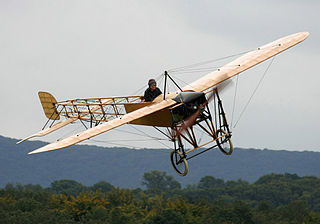
The Blériot XI is a French aircraft from the pioneer era of aviation. The first example was used by Louis Blériot to make the first flight across the English Channel in a heavier-than-air aircraft, on 25 July 1909. This is one of the most famous accomplishments of the pioneer era of aviation, and not only won Blériot a lasting place in history but also assured the future of his aircraft manufacturing business. The event caused a major reappraisal of the importance of aviation; the English newspaper The Daily Express led its story of the flight with the headline "Britain is no longer an Island".
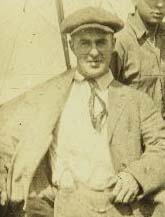
Otto William Timm was a California-based barnstormer and aircraft manufacturer of German descent. Charles Lindbergh's first flight was flown by Timm. Timm partnered at times with his brother Wally Timm who did a lot of flying for the nascent Hollywood movie industry.

The LWD Szpak (starling) was a Polish utility aircraft of 1945, the first Polish aircraft designed after World War II and built in a short series.

The Antoinette military monoplane, also known as the Antoinette Monobloc or the Antoinette-Latham was an early 3-seat monoplane built in France in 1911 by the Antoinette company in the hope of attracting orders from the French military. It featured a futuristic and aerodynamic design with innovative elements that were ahead of its time, including unbraced cantilever wings, an enclosed fuselage and wheel fairings, and an engine with steam cooling and direct fuel injection. However, due to an under-powered engine, it was barely able to fly and failed to attract orders.
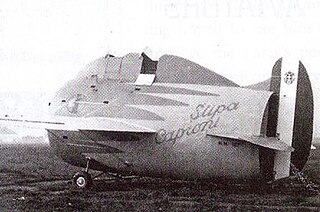
The Stipa-Caproni, also known as the Caproni Stipa, was an experimental Italian aircraft designed in 1932 by Luigi Stipa (1900–1992) and built by Caproni. It featured a hollow, barrel-shaped fuselage with the engine and propeller completely enclosed by the fuselage—in essence, the whole fuselage was a single ducted fan. Although the Regia Aeronautica was not interested in pursuing development of the Stipa-Caproni, its design influenced the development of jet propulsion.

The Burnelli CB-16, also known as the Uppercu-Burnelli CB-300, was a passenger aircraft designed by the American company Burnelli in 1928. It was the first twin-engined aircraft to have retractable landing gear. Only one was built.
The Howard Wright 1910 Monoplane was an early British aircraft. It was one of a series of similar designs built by Wright, then one of Englands foremost aircraft engineers, between 1909 and 1910. Three of these were on display at the 1910 Aero show at Olympia. The noted English pioneer aviator and aircraft designer Thomas Sopwith learnt to fly in an example.
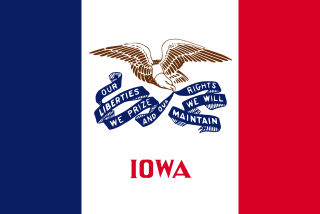
Iowa's first aeronautical event was the flight of a balloon around 1850 by Professor Silas Brooks. Iowa's first powered flight was made by Art J. Hartman in his Iowa built, Hartman monoplane on 10 May 1910.
Arthur John Hartman was an American pilot and early aircraft builder.

The Curtiss Model 22 Cox Racers were two specialised racing aircraft built by the American Curtiss Aeroplane and Motor Company. The type was flown as a monoplane, biplane and triplane.
The Pegna-Bonmartini Rondine, or Pegna Rondine, is a single-seat ultralight sport aeroplane designed by Giovanni Pegna and built by Piaggio in Italy during 1923.

The 1910 Deperdussin monoplane was the first aircraft to be built in significant quantities by Aéroplanes Deperdussin. The type was produced in a number of variants which were flown successfully in air races and gained several records during 1911, and was used by the Australian Central Flying School at Point Cook, Victoria. Several have survived, including an airworthy example in the Shuttleworth Collection in England.
The Emsco B-4 Cirrus was a mid-wing, two-seat trainer built in the US in the late 1920s. Six were built and three variants with more powerful engines flown.
The Parmentier Wee Mite was a British two-seat, parasol monoplane designed by Cecil Noel and first flown in Guernsey in 1933.
The Stiles Dragon Fly was an American two seat monoplane aircraft of the late 1920s. It was aimed at private and club owners. Significant production was planned but few were built.
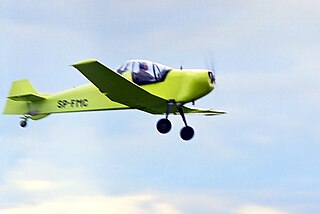
The Aero AT-1, a.k.a. Antoniewski AT-1, is a two-seat, low wing, ultra-light sport aircraft, developed by Tomasz Antoniewski, manufactured in Poland by Aero AT in ready-to-fly certificated form and as a kitplane.














